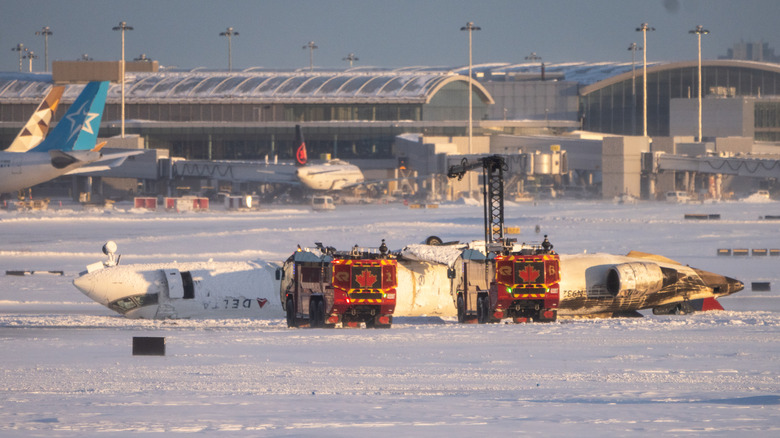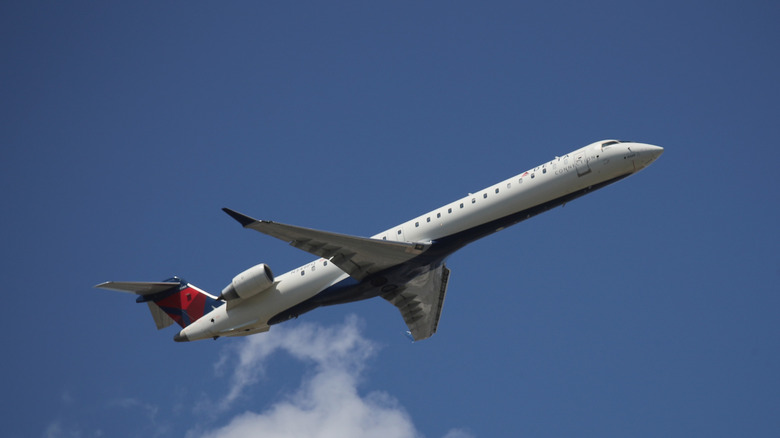The Delta Plane's Wings Breaking Off Was The Best-Case Scenario: Here's Why
Yesterday, February 17th, a Bombardier CRJ-900 passenger jet flying for Delta Airlines crashed while landing in Toronto. The right wing broke off after hitting the runway, and the plane's fuselage rolled upside-down before coming to a stop. Miraculously, everyone onboard the airliner survived. Safety investigators and aviation experts are going to be combing through all of the evidence to find out exactly what caused the plane to crash in the first place. In the meantime, everyone can be thankful that the accident wasn't much worse, and all credit goes to the pilots, flight attendants, emergency ground crews, and passengers for helping out to minimize casualties.
In the event of a catastrophic crash like the CRJ-900 experienced, the airframe rapidly disassembling was the best-case scenario. Much like cars which have crumple zones since the late 1950s to absorb impacts, aircraft have safety features that minimize destruction in the event of a crash. One such feature, as described by David Soucie, a safety analyst for CNN and a former inspector for the FAA, are breakaway wings. On most passenger airliners, fuel is stored in the wings. Having those wings break off from the fuselage full of passengers and ignite further away likely saved a lot of lives. CNN also notes that the CRJ-900's seats were solid enough to prevent even more injuries and fatalities. As seen in the automotive world, seatbelts and good seats save lives.
Ingenious engineering
In 1987, a McDonnell-Douglas DC-9 airliner (a plane eventually replaced by models from Boeing) crashed in Colorado after ice accumulated on the wings. It, in a similar fashion, rolled when it crashed on the runway. However, the right wing did not break away. National Transportation Safety Board (NTSB) paperwork from that incident reads: "Because the right wing was still full of fuel, a high degree of danger existed from a possible outbreak of fire while rescuers cut away airplane structure to gain access to trapped passengers." 28 people died in that crash. Additionally, the heavy wing crushed part of the fuselage, making rescue much more difficult, and survivability much less likely.
Aircraft, like the CRJ-900, are designed with survivability as one of the paramount concerns. In Delta crash, the airframe failed in exactly the "right" way, greatly increasing the chances everyone onboard would survive. A multimillion-dollar aircraft may be wrecked beyond any hopes of repair, but 80 people on that flight walked away and that's, in part, thanks to some ingenious engineering.

